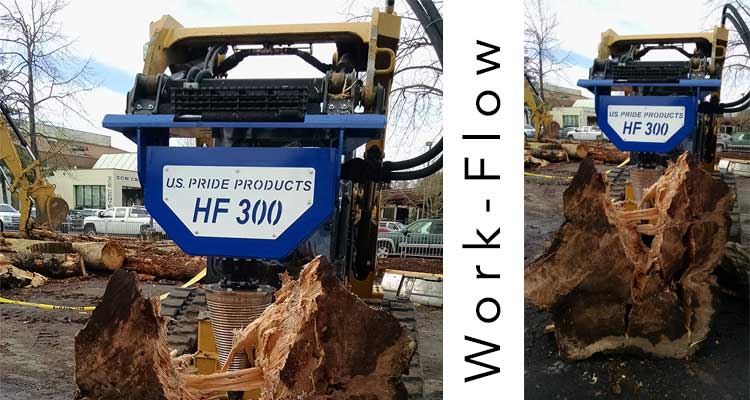
Like any other piece of equipment, the type of skid steer log splitter you should look for depends on your needs. We'll assume at this point that you're looking for a skid steer log splitter rather than a stand alone unit or a higher production firewood processor, and that you're in a production environment (not a homeowner).
There are so many questions to ask about big wood log splitters. You should consider every question as it can be important to production. If you're paying employees, production considerations are crucial.
What size logs are you dealing with?
It's important to look at both log diamater and length. Most wood splitters that use a ram splitter are limited by cylinder stroke and log diameter. Depending on the splitter, you can usually split up to a 30"-36" long log with this type, which means you have to cut everything down to length first. Large diameter logs have to be cut with a long bar chain saw first before being split. Big chain saws are hard on employees. If you need to split 4' diameter logs, the ram style skid steer log splitter won't work for you. A better way is to use a Cone screw splitter (AKA: auger cone splitter) on large diameter logs first. The largest U.S. Pride cone screw splitters can split 20' long logs and diameter isn't really a concern. You can split down the side to split the edge rather than the middle of the big logs first. Once you resize the logs, you can split them with a traditional skid steer log splitter or stand alone splitter for firewood. If you only need to reduce the size of material to process it in a tub or horizontal grinder, the cone screw splitter for your skid steer is probably the best choice for you.
U.S. Pride makes the biggest wood splitters in the industry! Our auger cone splitters are built to last here in the U.S.A. and can tear apart the big wood!
Where will you run the skid steer log spliter?
If you have a relatively small space to split in, you'll need to move the split material out of the way. Upside down skid steer log splitters do work fairly well, but they have limitations. First, you can move up to a log and split it. You don't have to lift it up onto the splitter. However, after you split a few pieces, you have a lot of wood in the way. Since the bucket isn't on the skid steer, you don't have any way to move the split logs without taking the log splitter off of the skid steer and putting the bucket on. It's a slow method. The cone screw splitter is a little more agile. It doesn't stick out as far making it more compact and easier to move the skid loader around. It's also easier to move split logs out of the way. You can use the cone splitter head to push split log pieces around. You can also partially screw into a log, pick it up and move it to an open area. Then continue splitting.
Work-Flow
Your work-flow is important. Typically with large diameter logs, the best method is to use big equipment on big logs rather than hand held tools like a chain saw to resize first. Not only is it generally safer, it also reduces fatigue on your employees. Start with a U.S. Pride cone screw splitter on your skid steer to reduce the size of large logs along their diameter. Then move to a chain saw to cut logs to length where they can be processed for firewood or moved to the next processing step. That could also be a tub or horizontal grinder for mulch, fuel, etc.
| 





.jpg)
